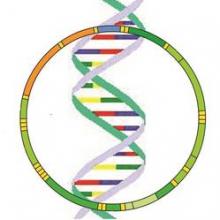A type of gene therapy to prevent maternal transmission of mitochondrial diseases will soon be available in the United Kingdom, while in the United States, a government-sponsored study on the bioethical and social policy implications of the controversial technology is just getting underway.
On Feb. 24, the U.K.’s House of Lords voted to authorize “mitochondrial donation” to be used with in vitro fertilization when it is determined that a woman’s eggs may contain mitochondrial DNA abnormalities, and that an individual with those abnormalities is at risk of having or developing a serious mitochondrial disease. The House of Commons had approved the use of the procedure earlier in February.
With this landmark vote, the U.K. becomes the first country to allow the use of the technique, although it is unlikely to be used widely, since specialists will be required to receive approval from the Human Fertilisation and Embryology Authority (HFEA) each time they wish to use the technique.
Mitochondrial donation involves removal of the nuclear DNA from the egg or fertilized egg of a woman with abnormal mitochondrial DNA, which is then transferred into an egg or fertilized egg from a healthy donor, after the nuclear material has been removed from the donor egg. This technique is also referred to as “mitochondrial transfer” or “mitochondrial replacement therapy.”
Critics of the procedure have labeled it “three parent” IVF and said it will produce “designer babies.” They warn that, if allowed, the technology would mark the beginning of a slippery slope toward enabling modification of nuclear DNA and germ line modification.
And that debate is starting to heat up in the United States.
In the U.S., the use of this technology is under the purview of the Food and Drug Administration, which has the authority to regulate human cells used in therapy “involving the transfer of genetic material by means other than the union of gamete nuclei,” an agency spokesperson said.
For clinical trials of this technique to proceed, the FDA must review and approve an Investigational New Drug (IND) application, submitted by an investigator. Permission does not indicate approval, only that the FDA is allowing the trial to proceed.
In 2014, the FDA held a meeting of its Cellular, Tissue, and Gene Therapies Advisory Committee to discuss scientific and clinical issues related to the technology, including the types of women who should be enrolled in the first trials. The agency requested that the Institute of Medicine study the ethical and social policy issues related to new techniques that involve genetically modifying eggs and zygotes for the purpose of preventing transmission of mitochondrial diseases.
The IOM committee met for the first time in January; the final report is expected to be available in March 2016.
Animal trials underway
Researchers at Oregon Health & Science University (OHSU) in Portland have tested mitochondrial DNA transfer in macaque monkeys, using unfertilized eggs, and are now ready to start clinical trials in humans using this technique.
“We welcome this development” in the United Kingdom, where the regulatory and ethical issues were thoroughly considered, Shoukhrat Mitalipov, Ph.D., the lead investigator, said in an interview. His group provided regulators in the U.K. with animal and in vitro data.
At the FDA meeting last year, Dr. Mitalipov, the head of OHSU’s Center for Embryonic Cell and Gene Therapy, described the successful results of mitochondrial transfer in four macaque monkeys and said they were ready to start trials in humans. At the time, the monkeys were almost adult age and were healthy and had normal blood results, which showed that mitochondrial DNA in oocytes could be replaced, he told the panel.
An important issue is whether the offspring of these monkeys are normal, since one criticism of the technology is that a permanent change is being made to the germline and would be passed along to future generations.
The monkeys are now a year older, and based on discussions at the FDA panel meeting, the Oregon researchers are extending their nonhuman primate research.
Dr. Mitalipov said they had not submitted a formal IND to the FDA, but have approached the agency about what kind of additional animal and in vitro studies using human cells are needed before clinical trials in humans can begin.
If they gained clearance for human trials, Dr. Mitalipov said their plan would be to limit the study to 5-10 families known to be carriers of mitochondrial DNA mutations, who have already had a child diagnosed with the mitochondrial disease, which could include mutations that cause severe conditions early in life, such as Leigh’s syndrome or MELAS (mitochondrial encephalomyopathy, lactic acidosis, and stroke-like episodes).


